ART 310 Bruksanvisning
ART
ej kategoriserat
310
Läs gratis den bruksanvisning för ART 310 (6 sidor) i kategorin ej kategoriserat. Guiden har ansetts hjälpsam av 14 personer och har ett genomsnittsbetyg på 4.4 stjärnor baserat på 7.5 recensioner. Har du en fråga om ART 310 eller vill du ställa frågor till andra användare av produkten? Ställ en fråga
Sida 1/6

General Overview
The Model 310 is a fourth order Linkwitz-Riley electronic crossover. This
unit may be used in two modes of operation:
Stereo 2-Way -or- Mono 3-Way
The 310 crossover splits the frequency of an input signal into two (when
used as a 2-Way crossover) or three (when used as a 3-Way crossover)
separate signals which may then be sent to ampliers or other signal pro-
cessing equipment in a sound system.
Power Connections
The 310 has an internal power supply which is designed to operate from
95 to 130VAC at 50/60Hz or from 190 to 250VAC at 50Hz. Power con-
sumption is 12 watts. Make sure the line voltage switch is set to the prop-
er setting before plugging the unit into a mains socket.
Never operate this piece of equipment with the ground pin removed. If the
cord becomes cracked or broken, discontinue use until you can have it
replaced.
Installation
The 310 occupies a 1U rack space and is intended for installation in stan-
dard 19” equipment racks. Its depth is 8.5” and weight is 4.5lbs (2.5kg.)
* Caution: The following must be observed to prevent malfunction-
ing and/or possible equipment damage.
1. Before plugging in the 310 into the main AC line, make sure that all of
the equipment following the crossover outputs is turned o or all of the
inputs are turned down.
2. The unit should only be turned on after it has been established that the
main AC line is supplying the correct voltage.
3. Never change the frequency range switches (from x10 to p1-x1 posi-
tion - or vice versa) with the crossover passing audio signals.
Transients can result and speaker damage is possible.
4. Keep the 310 away from excessive moisture.
1
Produktspecifikationer
| Varumärke: | ART |
| Kategori: | ej kategoriserat |
| Modell: | 310 |
Behöver du hjälp?
Om du behöver hjälp med ART 310 ställ en fråga nedan och andra användare kommer att svara dig
ej kategoriserat ART Manualer

6 Oktober 2025
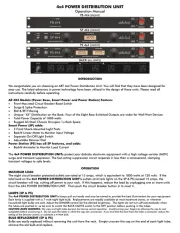
5 Oktober 2025
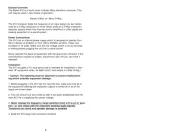
2 Augusti 2025
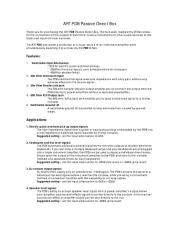
2 Augusti 2025
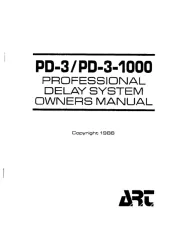
2 Augusti 2025

2 Augusti 2025
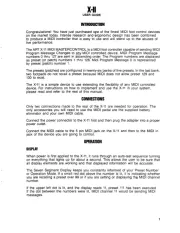
2 Augusti 2025
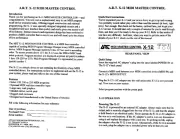
2 Augusti 2025
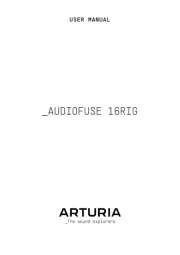
2 Augusti 2025

2 Augusti 2025
ej kategoriserat Manualer
- Atdec
- Zelmer
- NVT
- Steiner
- Guide
- Phanteks
- PXN
- Ingenico
- Silver Cross
- Canon
- WEG
- Smile
- Gastroback
- Sweet Alice
- Martin
Nyaste ej kategoriserat Manualer

23 Oktober 2025
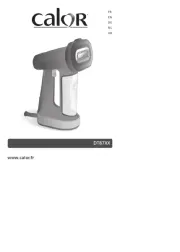
23 Oktober 2025
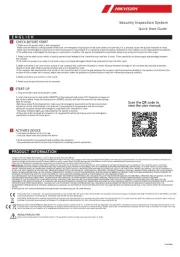
23 Oktober 2025
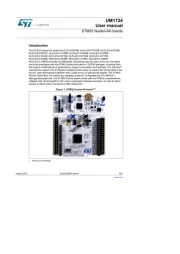
23 Oktober 2025
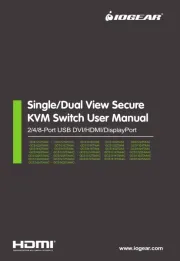
23 Oktober 2025
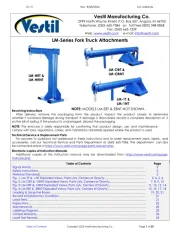
23 Oktober 2025
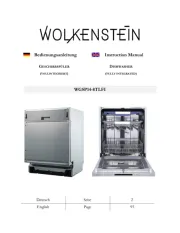
23 Oktober 2025

23 Oktober 2025
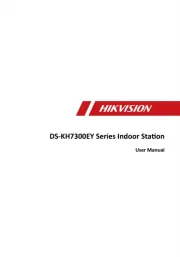
23 Oktober 2025
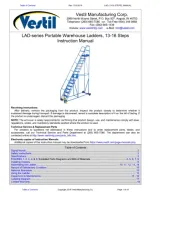
23 Oktober 2025